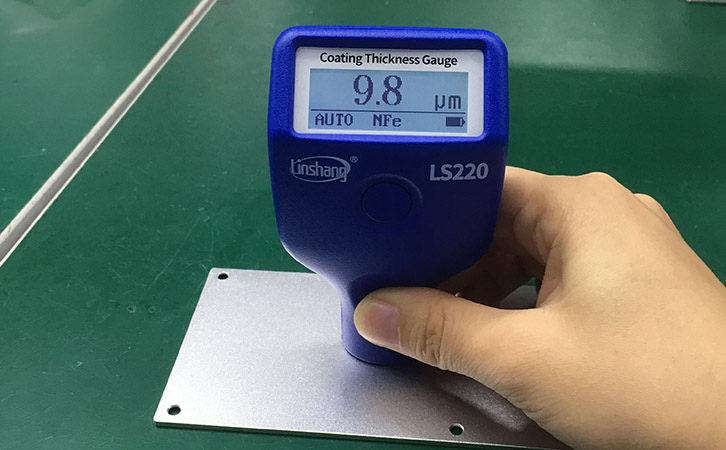Factors Affecting the Accuracy of the Galvanized Coating Thickness Gauge
When the metal is exposed to the air for a long time,it is prone to oxidation reaction and there is rust and corrosion that we often say.The galvanized layer can help the steel and other materials to prevent corrosion and rust.International and national standards have specified thickness values for the thickness of the galvanized layer to ensure its anti-corrosion and anti-rust properties.It can also be said that the thickness of the galvanized coating determines the anti-corrosion and anti-rust properties of the plated parts.The excessively thick galvanized layer.It may cause the coating to fall off easily,while the too thin galvanized layer will not function as a good anti-corrosion and anti-rust.
The galvanized coating thickness gauge is a coating thickness gauge professionally used to detect the thickness of a galvanized layer.In the process of measuring the thickness of the galvanized layer using the instrument,there are many details that will affect the accuracy of the data.
Below we will detail the factors that affect the accuracy of the galvanized coating thickness gauge.
1.Magnetic properties of the test piece base metal (metal substrate)
The accuracy of the galvanized coating thickness gauge using the magnetic principle is affected by the magnetic properties of different substrates. To eliminate these effects,it is recommended to use a standard board which is not galvanized and same as the base material to make zero adjustment
2.Magnetic field generated by surrounding equipment
The magnetic properties of the substrate affect the accuracy of the galvanized coating thickness gauge.Similarly, the strong magnetic fields generated by various surrounding equipment can also affect the accuracy of the instrument.
3.The data of the edge and inner corner of the test piece is inaccurate
When measuring the thickness of the galvanized layer, it is best to choose the middle and flat position.The instrument is sensitive to the steep shape of the test piece surface and can also be an edge effect.The data is less reliable when measuring near these edges or near some internal angles.
4.Roughness of the galvanized layer surface
The roughness of the galvanized layer surface is not very uniform and the roughness at different locations may vary greatly.Therefore,it is also recommended to reduce the measurement error by measuring and averaging multiple times when measuring the thickness of the galvanized layer.
5.Substance attached to the galvanized layer surface
The accuracy of the galvanized coating thickness gauge is usually um grade.The adhesion of the galvanized layer surface may have a great influence on the tested data.Therefore, it is best to remove the substances adhering to the surface before the measurement.The probe of the gauge is in direct contact with the galvanized layer surface.
Of course,in addition to measuring the galvanized layer thickness,the galvanized coating thickness gauge can also be used to measure many types of coating thickness,such as paints, powders,coatings,etc.
- High precision coating thickness gauge for used car
- Automotive paint protection films coating thickness gauge
- Plating Thickness Measuring Instrument for Detecting Anti-corrosion Coating
- Linshang LS220, LS191, LS160A– Necessary for Car Cover Inspection
- Coating Thickness Gauge for Second Hand Vehicle
- Zero Adjustment Step of Coating Thickness Gauge
